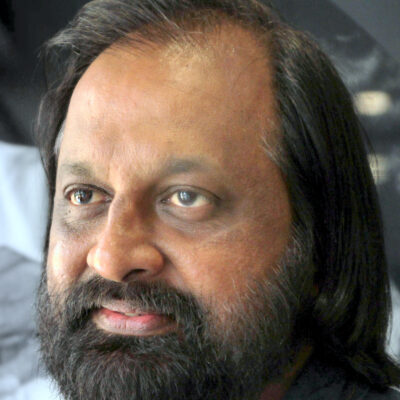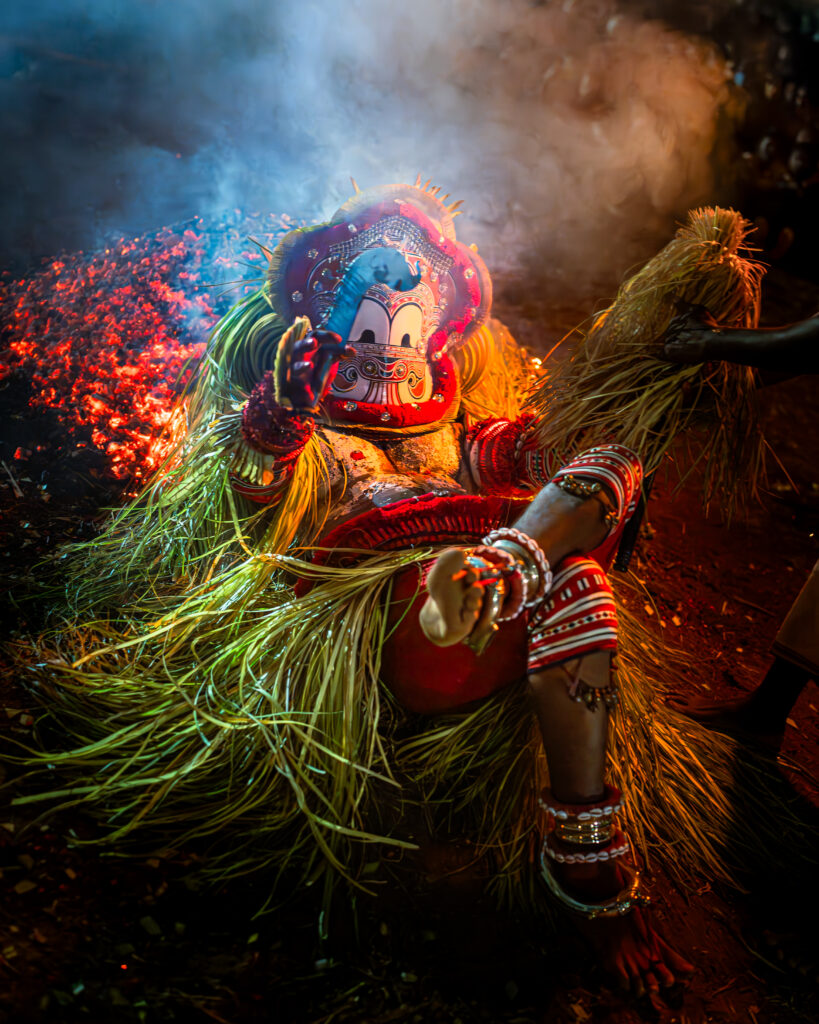By Ramachandran, Keli
Art Café – Folklore – Unravelling the Cultural Tapestry of Kerala
The catchy phrase “God’s own country,” coined by Walter Mendez in 1989, is more than just a tagline, as no other introduction had made Kerala so well-known to the globe before that.
This epithet is attributed to the folklore that Kerala is the land reclaimed from the sea by Parashurama, an incarnation of God. Every Malayali believes that this Kerala story is like written history; that is the speciality of folklore.
Long before the development of governments and the democratisation of knowledge, folk knowledge, through its different methods, gave direction to society by providing knowledge and a sense of justice. Through art, customs, rituals, devotion and folk knowledge, it was a companion of society, with the conviction and teaching to keep man connected to the earth.
Moreover, agriculture and other land-related discourses strengthened the emotional connection between man and the soil. Because of that, every folklore study is also an anthropological study of the human race from its origin to the present day.
Folklore has long been limited to oral tradition. Richard M. Dorson gave another dimension to folklore in the 1960s after different interpretations by many social scientists and called it folk life instead of folklore. Today, folklore is a social activity that identifies the community. Any attempt to discover the identity of any community is a folklore study.
William R. Bascom says that folklore has four main elements. It is a mechanism for repressing human repressed emotions and desires and escaping from them into the world of imagination.
The ancient art of Theyam
This is evident if we observe the mythology and present-day expressions of the practice of Theyam in the Malabar region of Southern India. Theyam is an ancient folk ritual that blends theatre, mime, and worship. It predates Hinduism but includes Hindu mythology.
Take the example of the lively and colourful ritualistic ancient dance from northern Kerala, Pottan Theyyam, which challenges the caste system. In its depiction, a murdered Dalit who was a victim of caste discrimination is addressing today’s society by questioning that contradiction. Sample this depiction: The upper-class man is ordering him to move away. Potan Theyyam says, ‘My blood is red, and so is yours. On what basis are you telling me to move away?”
Even though the legend says the upper caste killed the Dalit, Potan Theiyam makes a mockery of the Dalit murder, which says in the plot that he was leaning on a burning fire pit and bathed in fire and said, “I am feeling cold.”
Another Theyyam Muchilotu Bhagavathy is the story of a woman scholar who had to end her life as she fell victim to patriarchy.
The politically relevant part of the plot is a group of scholars who are intolerant of the intelligence of a woman who has no one to beat (her) in knowledge and argument. They conspire to trap her. When scholars ask her what is the greatest happiness in the world, she answers it is sexual pleasure.
On hearing the answer, they put her on the defence, asking how a virgin would know about it, rejecting her argument that one did not need to experience (the act) directly. It is mere common sense that as sex is devised by nature for creation, it should be an extreme pleasure. Otherwise, no creation will happen in the universe. The patriarchal scholars accuse her of adultery. Distraught, she commits suicide.
Muchilottu Bhagavathy Theyam is a revisit of that plot. Here, Theyyam speaks to society as a protest of the woman community against the imbalanced gender justice.
Even today, women cry while singing Muchilotu Bhagwati’s song. Muchilotu Bhagavathy Theyam is a mechanism for every woman who wants equal justice to pay her respects to the lady who gave her life for it and escape to the world of imagination, which is not entirely balanced today.
What works here is not the logic of blind faith but the imagination of an imaginary world of self-consolation. In the energy of that hallucination, she tries to overcome contemporary conflicts mentally. A continuum of hope is being created here. This continuity is a virtue of folklore.
Substantiated by culture
Another aspect is the validation of culture. Human beings cannot believe anything without the support of reason. Therefore, every code of conduct must be validated based on culture. It builds a strong foundation of human belief. Folklore does that sometimes through proverbs, storytelling, rituals, or some other medium of expression. It is on the back of this validation that society takes culture on faith.
Proverbs and sayings
Next, proverbs come in as the authoritative final word in everyday debates. Proverbs are unquestionable precepts. That is how they become a key element in folklore that validates culture. Stories are another way of fulfilling this function. See the story of Adivasi, who provided his confined space in a tiny tree house to save a man lost in the forest at night. This Adivasi reclining on a tree branch fell asleep that night, fell prey to wild animals and gained heaven, glorifying the value of hospitality. While the Sanskrit catchphrase “Atithi Devo Bhava” addresses the upper caste hierarchy, folklore stories address the lower classes.
Folklore does that sometimes through proverbs, storytelling, rituals, or some other medium of expression. It is based on this validation that society follows the culture of faith.
Similarly, fruit sayings are the authoritative final word in everyday debates. Fruit sayings are unquestionable precepts, which is why they have become a key element in folklore that authenticates culture.
Photo credit to Sujith Edamangalath.































